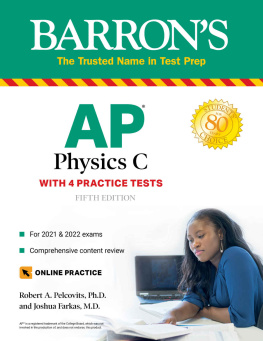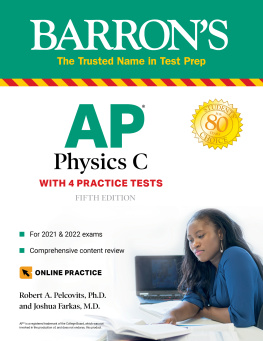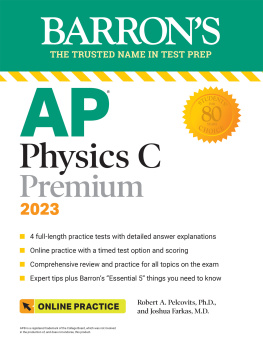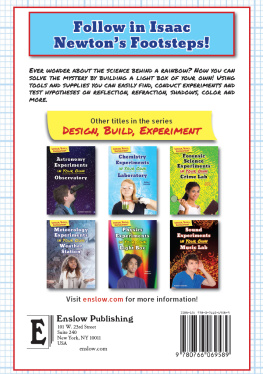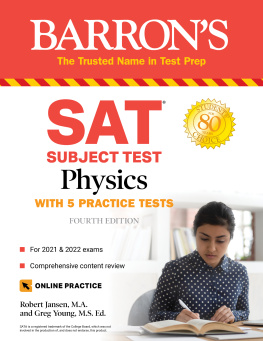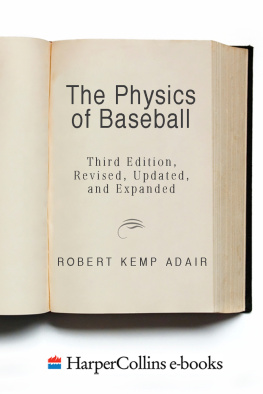Pelcovits Robert A. - AP® Physics C, Fifth Edition
Here you can read online Pelcovits Robert A. - AP® Physics C, Fifth Edition full text of the book (entire story) in english for free. Download pdf and epub, get meaning, cover and reviews about this ebook. year: 2021, publisher: Barrons Educational Series; Barron’s Educational Series, genre: Children. Description of the work, (preface) as well as reviews are available. Best literature library LitArk.com created for fans of good reading and offers a wide selection of genres:
Romance novel
Science fiction
Adventure
Detective
Science
History
Home and family
Prose
Art
Politics
Computer
Non-fiction
Religion
Business
Children
Humor
Choose a favorite category and find really read worthwhile books. Enjoy immersion in the world of imagination, feel the emotions of the characters or learn something new for yourself, make an fascinating discovery.
- Book:AP® Physics C, Fifth Edition
- Author:
- Publisher:Barrons Educational Series; Barron’s Educational Series
- Genre:
- Year:2021
- Rating:4 / 5
- Favourites:Add to favourites
- Your mark:
- 80
- 1
- 2
- 3
- 4
- 5
AP® Physics C, Fifth Edition: summary, description and annotation
We offer to read an annotation, description, summary or preface (depends on what the author of the book "AP® Physics C, Fifth Edition" wrote himself). If you haven't found the necessary information about the book — write in the comments, we will try to find it.
AP® Physics C, Fifth Edition — read online for free the complete book (whole text) full work
Below is the text of the book, divided by pages. System saving the place of the last page read, allows you to conveniently read the book "AP® Physics C, Fifth Edition" online for free, without having to search again every time where you left off. Put a bookmark, and you can go to the page where you finished reading at any time.
Font size:
Interval:
Bookmark:
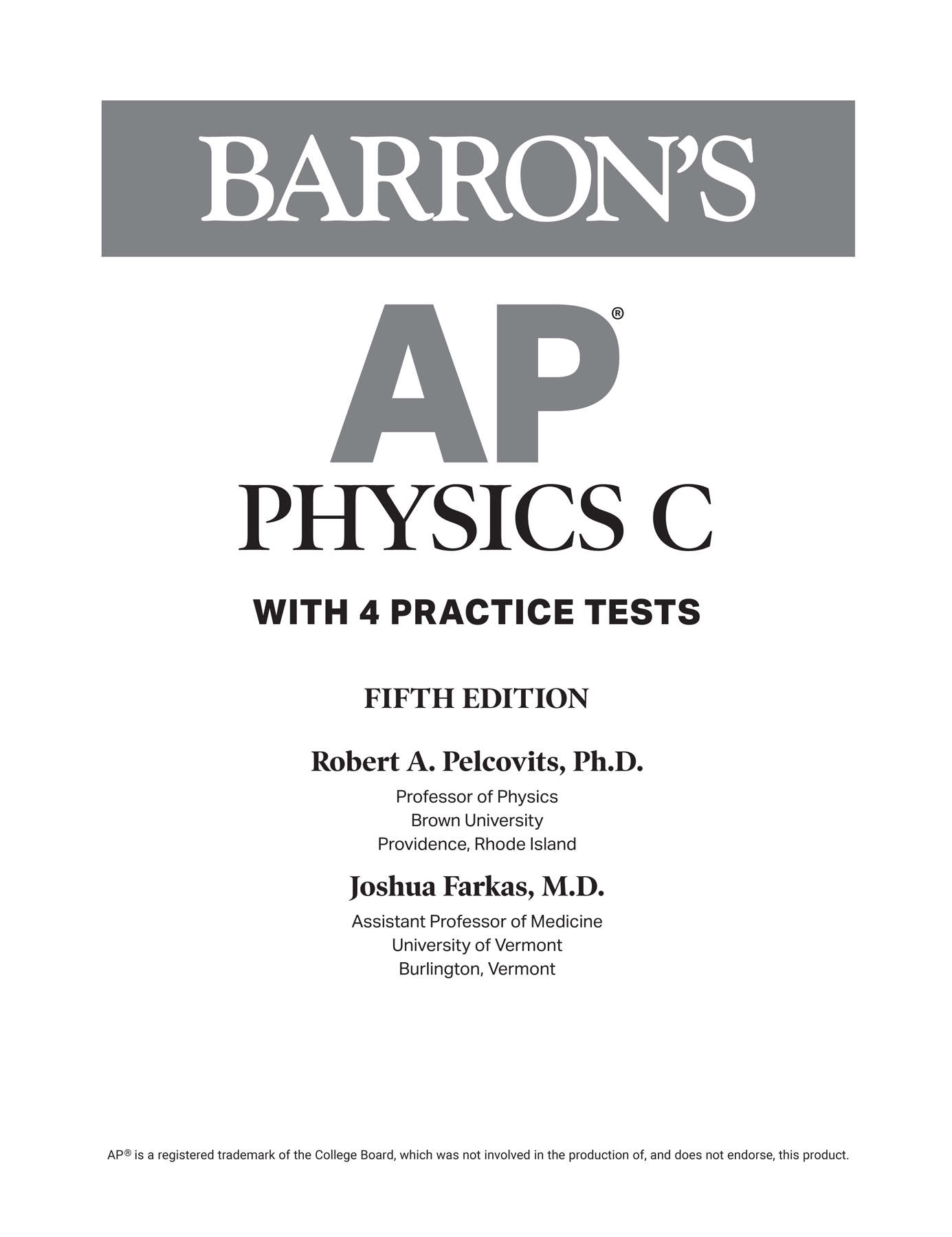
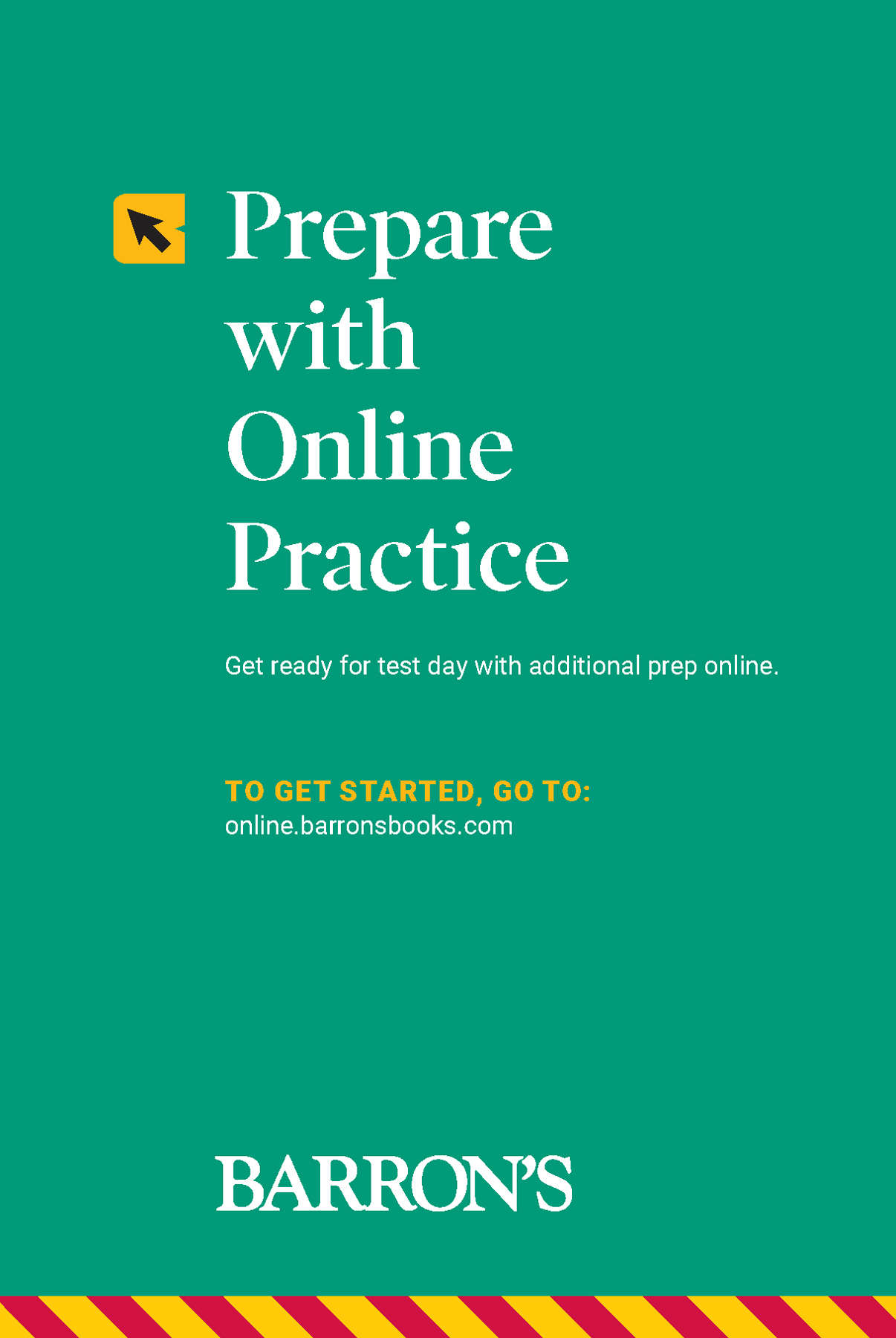
Acknowledgments
I owe a tremendous debt of gratitude to my coauthor, Joshua Farkas, an exceptionally gifted former student of mine. Josh contributed the lions share of work to the first edition, developing most of the examples and problems (especially the novel and creative ones), and offering numerous ideas and suggestions as to the best way to present difficult concepts and useful problem-solving strategies. I am very grateful for all he has done in making our book a success. While preparing the fifth edition, I was helped by yet another superb Brown undergraduate, Adam Scherlis. Adam reviewed all of the examples, problems, and practice tests, catching many errors and making many suggestions for improvements. I am very grateful for his expert help.
RAP
I would first of all like to thank Robert Pelcovits for coauthoring this book with me and for his valiant efforts in its revision. To work with a man of his stature, both as a physicist and as a person, is indeed a privilege. This book never could have been possible without him. I would also like to thank Esta Farkas for heroically reviewing the initial drafts of this book for both content and English.
JDF
About the Authors
Robert Pelcovits is a professor of physics at Brown University, where he has taught since 1979. He earned his B.A. and M.S. degrees at the University of Pennsylvania and his Ph.D. at Harvard University. The author of over 80 publications in theoretical condensed matter physics, he has lectured on his research at many universities throughout the world. He has taught a wide range of courses at Brown, from introductory to advanced graduate level. In 1999 he was awarded the Philip J. Bray Award for Teaching Excellence in the Physical Sciences by Brown. In 2008 he was named a Royce Family Professor of Teaching Excellence at Brown, and in 2011 the university awarded him the Harriet Sheridan Award for Distinguished Contribution to Teaching and Learning.
Having earned both Sc.B. and M.S. degrees from Brown University and an M.D. degree from Cornell University, Joshua Farkas is currently an assistant professor of medicine at the University of Vermont. He was also a National Merit Scholar, a Goldwater Scholar, and a Faculty Scholar at Brown University, with experience teaching college-level calculus and calculus-based physics. Having scored 5s on AP exams in BC Calculus, Biology, Chemistry, and Physics C, as well as 800s in SAT I Math and on SAT II exams in Math IIC, Chemistry, and Physics, he brought a students perspective to this book.
Copyright 2020, 2016, 2012, 2008 by Kaplan, Inc., d/b/a Barrons Educational Series
Prior edition Copyright 2002 by Barrons Educational Series, Inc., under the title How to Prepare for the AP Physics C Advanced Placement Examination.
All rights reserved under International and Pan-American Copyright Conventions. By payment of the required fees, you have been granted the non-exclusive, non-transferable right to access and read the text of this eBook on screen. No part of this text may be reproduced, transmitted, downloaded, decompiled, reverse engineered, or stored in or introduced into any information storage and retrieval system, in any form or by any means, whether electronic or mechanical, now known or hereinafter invented, without the express written permission of the publisher.
Published by Kaplan, Inc.,
d/b/a Barrons Educational Series
750 Third Avenue
New York, NY 10017
www.barronseduc.com
ISBN: 978-1-5062-7424-9
10 9 8 7 6 5 4 3 2 1
Kaplan, Inc., d/b/a Barrons Educational Series print books are available at special quantity discounts to use for sales promotions, employee premiums, or educational purposes. For more information or to purchase books, please call the Simon & Schuster special sales department at 866-506-1949.
Contents
As you review the content in this book to work toward earning that on your AP PHYSICS C exam, here are five things that you MUST know above everything else:
Dimensional Analysis. Many AP Physics multiple-choice questions can be answered or have the number of possibly correct answers significantly reduced by using dimensional analysis to check the units of the answers. Even for free-response questions you should check your units. You may discover a mistake in your work by doing so. Whenever you solve a practice or homework problem, always check the units; this is a great habit to develop while mastering physics. | |
Vectors. Vectors are key quantities in physics, whether Newtonian mechanics or electricity and magnetism. Review the addition and subtraction laws for vectors in . Most important, review how to resolve vectors into components, including the relevant trigonometry. | |
Graphs. The AP exam will test your ability to understand physical information in graphical form, such as displacement of a moving object vs. time. You will need to draw graphs in the free-response questions and select correct graphs in the multiple-choice section. Review the use of graphs in the free-response questions. Also read Graphical Analysis of Data in . | |
Newtons Laws. Physics C Mechanics is all about the application of Newtons three laws of motion to mechanical systems. Review , paying close attention to the correct drawing of free-body diagrams and the proper application of Newtons third law to a pair of interacting objects. | |
Practice! Practice! Practice! The best (and maybe only) way to learn physics is to do practice problems. Reading a practice book or textbook over and over will not help you. Do as many practice problems as you can in this book, your textbook, and any online resources. |
HOW TO REVIEW FOR THE AP PHYSICS EXAM
S olving physics problems is like mastering any sport or musical instrument: If you want to do it well, you have to practice. Do not expect to understand everything immediately and do not be frustrated by the effort required to master some concepts and techniques. Contrary to popular conceptions of a vast divide between physics geniuses who can immediately solve problems and other people who simply cannot, learning physics requires hard work. However, a mastery of calculus-based physics will teach you analytical and mathematical skills that will prove extremely useful in a broad range of other disciplines.
GUIDE TO THIS REVIEW BOOK
Text
The text of the chapters works from the ground up without assuming extensive knowledge of physics on your part. Therefore, the text is appropriate at any stage of your mastery of AP physics. You may find it helpful to read the text along with your textbook when you are first learning the material and studying for course exams, or you may choose to read the chapters together as a review after you have completed most of your AP Physics course.
Questions
Because of space limitations, it is impossible for the questions to work from the ground up (i.e., start with very easy questions and progress to more difficult ones). Therefore, the questions are generally near the AP level and assume that you have some problem-solving experience. The questions are designed to raise you from a competent problem solver to an expert with extensive experience in solving AP problems. If you have difficulty with the questions, you may want to go back and solve some problems in your introductory physics textbook or AP physics textbook, as well as consider the advice in the next paragraph.
Next pageFont size:
Interval:
Bookmark:
Similar books «AP® Physics C, Fifth Edition»
Look at similar books to AP® Physics C, Fifth Edition. We have selected literature similar in name and meaning in the hope of providing readers with more options to find new, interesting, not yet read works.
Discussion, reviews of the book AP® Physics C, Fifth Edition and just readers' own opinions. Leave your comments, write what you think about the work, its meaning or the main characters. Specify what exactly you liked and what you didn't like, and why you think so.

